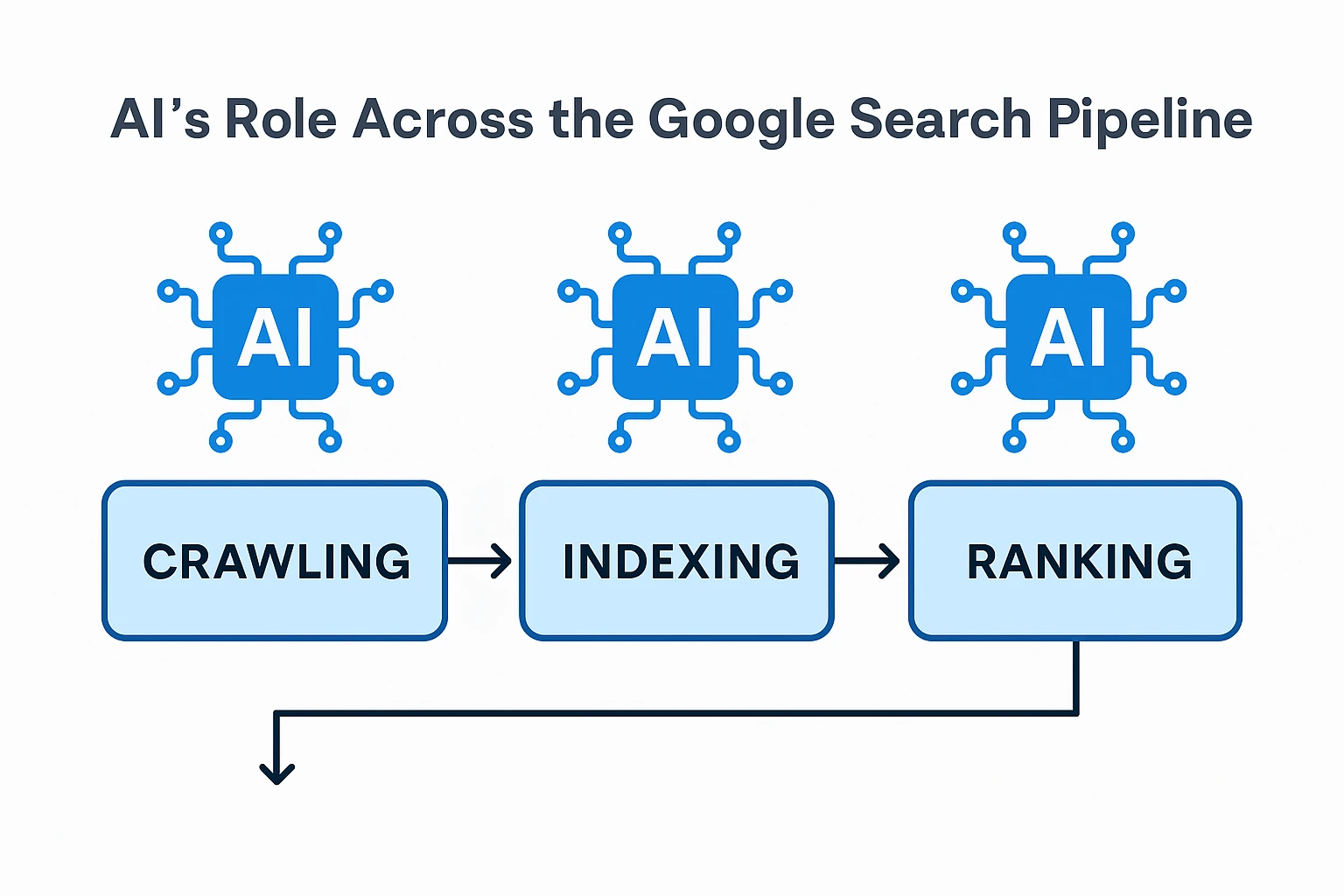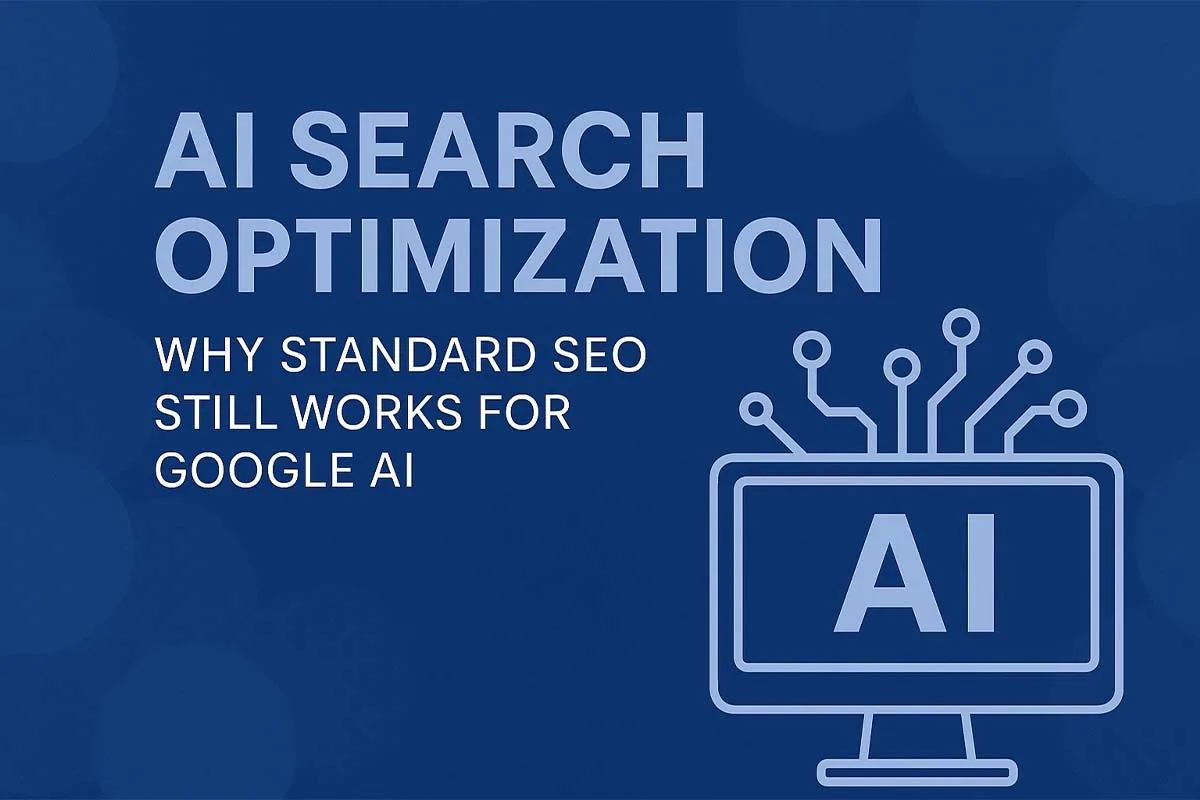AI Search Optimization: Why Old School SEO Still Remains Good for Google AI
Google’s Gary Illyes recently ensured that there is no need for any new or further optimization methods for AI-powered search.
According to him, “AI SEO” is not required, and the same old SEO methods that get activated with regular search also get activated with AI Overviews and AI Mode. This description removes much of the uncertainty around how sites must adapt to the shifting landscape of search driven by artificial intelligence.
AI’s Role in Google Search is Not New
The idea of standard search based on only conventional algorithms like PageRank and link-building is not the whole story anymore.
Artificial Intelligence is now embedded in every stage of the search process. It includes crawling, indexing, and ranking. The AI technology has been part of Google Search since more than a decade ago, starting with the introduction of RankBrain, which assisted Google in learning about users’ queries.
Gary Illyes underlined that AI is not an additional piece of search; it is integral to the way Google indexes and ranks web pages. That is, optimizing for AI search is actually the same as optimizing for regular search.
Key Takeaways from Gary Illyes’ Presentation
1. AI-Powered Search Features Use Existing Infrastructure
The same infrastructure that supports standard search is used to power Google’s AI-powered search feature. That implies using Googlebot to crawl pages, indexing the pages in an identical master index, and using the same algorithm to rank material.
2. No “AI SEO” is Required
AI search and regular search share the same ranking systems. There is no special strategy required. The SEO fundamentals—such as creating quality content, including keywords, and forming backlinks—haven’t changed.
3. Content Quality is the Highest Priority
Google pays no attention to whether content is generated by a human or created through AI software. The content’s quality, applicability, and usefulness are the only factors that matter.
4. AI is Found at Every Phase of Search
Starting from understanding the reason behind the searches to giving responses in different formats (text, images, videos), AI powers most of Google’s decision-making processes. Google can better comprehend and answer complex queries thanks to RankBrain and the Multitask Unified Model (MUM) technologies.
Misconceptions Around “AI SEO” and Google’s Clarification
Some SEO experts have coined terms like AEO (AI Engine Optimization) or GEO (Generative Engine Optimization) as a part of trying to differentiate traditional SEO from more contemporary efforts for optimization on AI-based platforms. However, Google assured that there is no separate algorithm or journey of optimization for AI Overviews or any other generative search features.
Google’s AI-based results are based on the same inputs and signals as traditional search. There is no official advice from Google to indicate that an AI SEO strategy would be necessary.
The Same Foundation Powers Both Traditional and AI Search
As Suzuki explained it, “Their main message is that new AI-powered features like AI Overviews and AI Mode are founded upon the same underlying processes as traditional search.”
The same Googlebot crawler, index, and ranking systems as regular search are leveraged by these features. Again and again throughout the discussion, the use of “same as above” was used to drive home the point that AI SEO is not some other thing—just regular SEO applied to new circumstances.
Content Source Doesn’t Matter—Quality Does
The most important thing that can be learned here is that Google’s algorithms are not coded to quantify the origin of content—human-written or assisted by AI software.
Instead, Google focuses on what are quality indicators such as relevance, trust, accuracy, and user satisfaction.
Gary Illyes was quoted as saying, “We are not trying to differentiate based on origin.” This implies that the device used to produce content does not affect ranking. The determining factor is that the content is useful, correct, and meets the intent of the user.
As Suzuki went on to explain, “The goal is to detect and reward high-quality, useful, and trustworthy content whether created by a human or with assistance of AI.”

AI’s Role in Crawling, Indexing, and Ranking
Google pointed out that AI plays a role in all facets of the search process:
- Crawling: Googlebot utilizes AI so it can better understand the structure and relevance of sites.
- Indexing: AI helps determine the way in which content is indexed and grouped.
- Ranking: AI-driven technologies like RankBrain and MUM help determine search intent, interpreting complex queries, and delivering relevant results.
RankBrain helps in interpreting new and ambiguous queries, while MUM enables the search engine to interpret content in varied formats and languages.
MUM can process text, images, and videos and supports over 75 languages.
Two Key Features of AI Overviews Optimization
- Query Fan-Out
AI Overviews expands a single query into multiple sub-queries related to it. It therefore enables it to give more profound and subtle responses. It gives users information through advanced search queries even.
- Grounding
Once an AI produces a generated answer, Google verifies it with what already exists in its search index. The process of verifying, or grounding, ensures that what was generated is correct and trustworthy. It is specifically designed to reduce misinformation and prevent errors or “hallucinations” on the part of AI systems.
Suzuki topped this off by saying, “It uses a process called grounding to compare the text it generates to information it has available in its search index, a critical step designed to verify facts and ward off AI ‘hallucinations.'”

